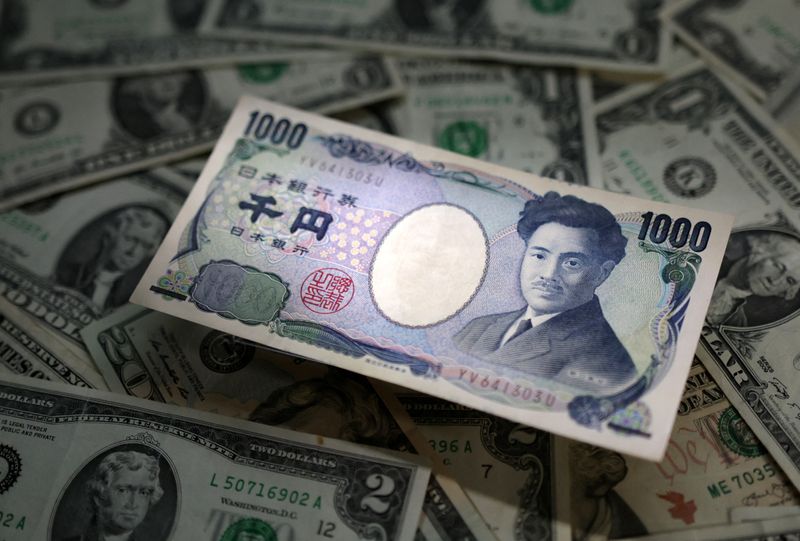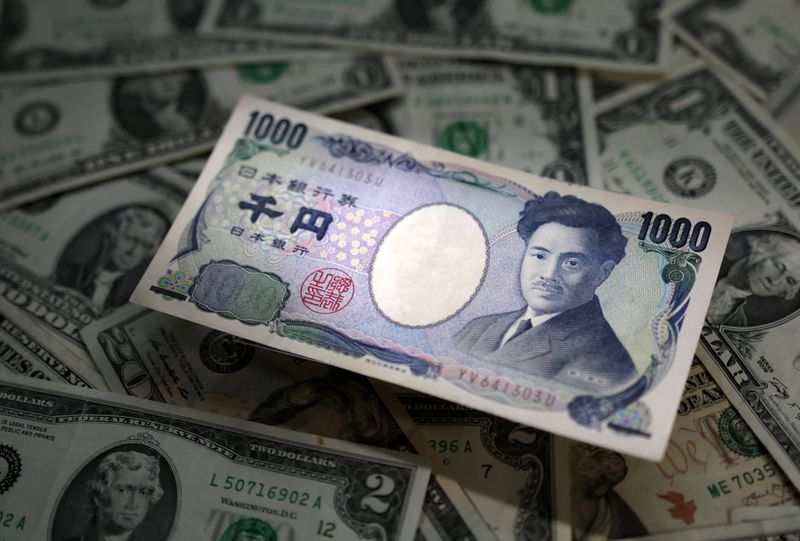Forex
US dollar hits three-month peak after inflation data, tops 150 yen


© Reuters. FILE PHOTO: Japanese Yen and U.S. dollar banknotes are seen in this illustration taken March 10, 2023. REUTERS/Dado Ruvic/Illustration/File Photo
By Gertrude Chavez-Dreyfuss
NEW YORK (Reuters) -The dollar rose to three month peaks on Tuesday, after data showed U.S. inflation rose more than expected in January, reinforcing expectations that the Federal Reserve will hold interest rates in March.
The greenback also topped 150 yen for the first time since November following the data.
Tuesday’s data showed that the Consumer Price Index (CPI) rose 0.3% on a monthly basis in January, above the 0.2% increase expected by economists polled by Reuters. On a year-on-year basis, it gained 3.1% versus the 2.9% estimated growth.
Excluding the volatile food and energy components, the CPI increased 0.4% last month after rising 0.3% in December. The core CPI advanced 3.9% year-on-year in January, matching December’s increase.
The greenback surged to 150.58 yen, a three-month peak. It was last up 0.7% at 150.44 yen. That 150 level is likely to trigger further jawboning from Japanese officials in an attempt to support the currency, analysts said.
The yen, which has tumbled more than 5% against the dollar so far this year, is under persistent pressure as investors pare back their expectations of the scale and pace of the Federal Reserve’s easing cycle.
The turned positive after the inflation data, touching a three-month high of 104.87. It was last up 0.6% at 104.80.
“The Fed has indicated that they’re going to take it slow, and I think today’s data as well as last week’s employment data, shows that they’re right in doing so,” said Russell Price, chief economist, Ameriprise Financial (NYSE:) in Troy, Michigan.
“Their message, I think, has been correct and the markets message of cuts coming sooner seems to be incorrect.”
Federal funds futures on Tuesday had priced in no rate cut in March and a lower than 50% chance of easing in May, according LSEG’s rate probability app. The first rate cut by the Fed is now expected to occur at the June meeting, with a roughly 80% probability.
In other currencies, the euro dropped 0.6% to $1.0705, after earlier falling to $1.0700, the lowest since mid-November. In cryptocurrencies, bitcoin touched its highest since December 2021 at $50,383, but fell below $50,000 after the CPI data. It was last down 1.0% at $49,307. The world’s largest cryptocurrency has risen nearly 18% this year, helped by last month’s regulatory nod for U.S.-listed exchange traded funds designed to track its price.

 Forex3 years ago
Forex3 years agoForex Today: the dollar is gaining strength amid gloomy sentiment at the start of the Fed’s week

 Forex3 years ago
Forex3 years agoUnbiased review of Pocket Option broker

 Forex3 years ago
Forex3 years agoDollar to pound sterling exchange rate today: Pound plummeted to its lowest since 1985

 Forex3 years ago
Forex3 years agoHow is the Australian dollar doing today?

 Cryptocurrency3 years ago
Cryptocurrency3 years agoWhat happened in the crypto market – current events today

 World3 years ago
World3 years agoWhy are modern video games an art form?

 Commodities3 years ago
Commodities3 years agoCopper continues to fall in price on expectations of lower demand in China

 Economy3 years ago
Economy3 years agoCrude oil tankers double in price due to EU anti-Russian sanctions

























